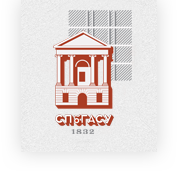Reception Aesthetics and the Remaking of Classic Film and Television Series: A Critical Analysis
DOI:
https://doi.org/10.63313/LLCS.9041Keywords:
Reception Aesthetics, Classic Film and Television Series, Remakes, Horizon of ExpectationsAbstract
The remakes of classic film and television series represent a meticulously planned artistic endeavor that enriches and diversifies China’s film and televi-sion industry. From the perspective of reception aesthetics, grasping the diverse needs of the audience is paramount to the success of these remakes. To achieve this, it is essential to fully consider the psychological needs of the audience and construct a common discourse space that transcends temporal and spatial boundaries. Such an approach not only evokes widespread resonance but also caters to the “horizon of expectations” across different audience groups. By adapting to shifts in the communication landscape and proactively stimulating the audience’s anticipation, these classic stories can be rejuvenated with new vitality in the modern era.
References
[1] Jauss, H.R. (1983) Towards an Aesthetic of Reception. Minneapolis: University of Minne-sota Press.
[2] Iser, W. (1978) The Act of Reading: A Theory of Aesthetic Response. Baltimore: The Johns Hopkins University Press.
[3] Ren, W.D. (2022) Keywords in Western literary theory: Reception aesthetics. Foreign Lit-erature, (04), 108-118.
[4] Wang, H.Q. (2021) A reception aesthetics perspective on current competitive reality shows: A case study of Sisters Who Make Waves. China Radio & TV Ac-ademic Journal, (05), 118-120.
[5] Jauss, H.R. & Holub, R.C. (1987) Reception aesthetics and reception theory (Zhou, N. & Jin, Y.P, Trans.). Liaoning People’s Publishing House.
Downloads
Published
Issue
Section
License
Copyright (c) 2025 by author(s) and Erytis Publishing Limited.

This work is licensed under a Creative Commons Attribution-ShareAlike 4.0 International License.















